
Navigli: The Heartbeat of Milan's Waterways
Discover Navigli in Milan: A historic and lively neighborhood with stunning canals, vibrant nightlife, and rich cultural heritage.
Navigli, a vibrant and historic neighborhood in Milan, is a must-visit destination for any traveler. Known for its picturesque canals, Navigli is a delightful blend of old-world charm and modern vibrancy. The canals, designed by Leonardo da Vinci, are the heart and soul of this district, offering a unique glimpse into Milan's rich history and architectural ingenuity. Stroll along the canal banks to discover quaint cafes, eclectic boutiques, and art galleries that line the cobbled streets. By day, Navigli is a haven for artists and shoppers, while at night, it transforms into one of the city's liveliest nightlife spots. The atmosphere is electric, as locals and tourists gather to enjoy aperitivo, live music, and the enchanting reflections of lights on the water. Navigli is also home to a variety of cultural landmarks. Visit the Basilica of San Lorenzo, one of Milan’s oldest churches, or explore the Navigli Art District, where contemporary art thrives. The neighborhood hosts several markets, including the famous Antique Market on the last Sunday of each month, perfect for those seeking unique souvenirs and vintage treasures.
Local tips in Navigli
- Visit during the evening to experience the vibrant nightlife and enjoy the beautiful sunset views over the canals.
- Don't miss the last Sunday of the month when the Antique Market takes over the streets, offering unique finds and local crafts.
- Try the local aperitivo tradition at one of the canal-side bars for a true taste of Milanese culture.
- Wear comfortable shoes; the cobbled streets can be tricky to navigate.
- Take a canal boat tour to see the neighborhood from a different perspective and learn about its historical significance.
Navigli: The Heartbeat of Milan's Waterways
Navigli, a vibrant and historic neighborhood in Milan, is a must-visit destination for any traveler. Known for its picturesque canals, Navigli is a delightful blend of old-world charm and modern vibrancy. The canals, designed by Leonardo da Vinci, are the heart and soul of this district, offering a unique glimpse into Milan's rich history and architectural ingenuity. Stroll along the canal banks to discover quaint cafes, eclectic boutiques, and art galleries that line the cobbled streets. By day, Navigli is a haven for artists and shoppers, while at night, it transforms into one of the city's liveliest nightlife spots. The atmosphere is electric, as locals and tourists gather to enjoy aperitivo, live music, and the enchanting reflections of lights on the water. Navigli is also home to a variety of cultural landmarks. Visit the Basilica of San Lorenzo, one of Milan’s oldest churches, or explore the Navigli Art District, where contemporary art thrives. The neighborhood hosts several markets, including the famous Antique Market on the last Sunday of each month, perfect for those seeking unique souvenirs and vintage treasures.
Iconic landmarks you can’t miss
Naviglio Grande
Discover the charm and history of Naviglio Grande, Milan's enchanting canal lined with cafes, boutiques, and vibrant cultural experiences.
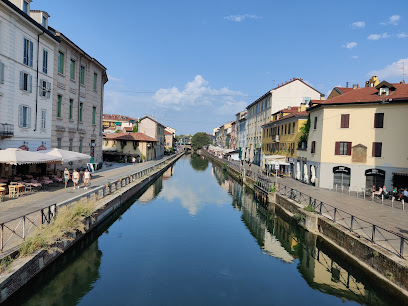
Arco di Porta Ticinese
Discover the Arco di Porta Ticinese, a stunning historical landmark in Milan that embodies the city's rich cultural heritage and architectural beauty.
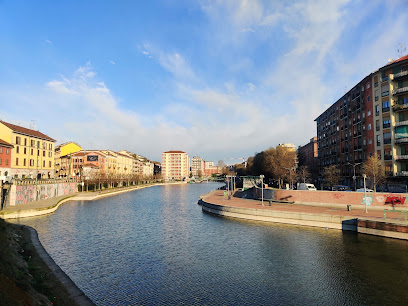
Navigli Milano
Discover Navigli Milano, a historical landmark where picturesque canals meet vibrant nightlife, art, and exquisite Italian cuisine.
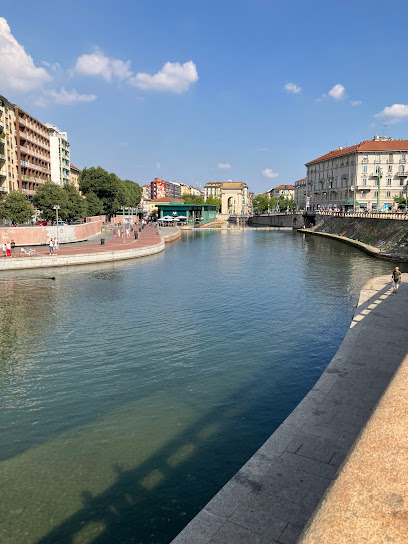
Naviglio Pavese
Explore Naviglio Pavese, a cultural gem in Milan, renowned for its stunning canals, vibrant nightlife, and rich artistic heritage.

Darsena del Naviglio
Discover the charm of Darsena del Naviglio, Milan's picturesque waterside oasis, where history meets vibrant city life.
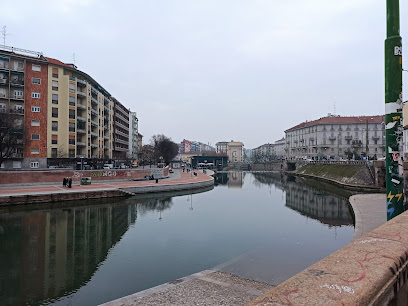
Parco Segantini
Experience the beauty of nature in the heart of Milan at Parco Segantini, a serene retreat for relaxation and inspiration.
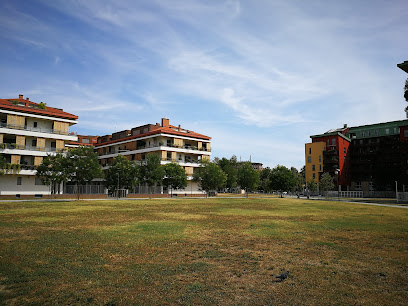
Vicolo Lavandai
Explore Vicolo Lavandai, a historical landmark in Milan, where charming architecture meets vibrant culture along the beautiful Naviglio Grande.
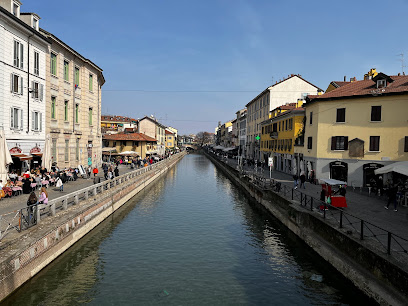
Porta Ticinese Medievale
Discover the historical charm of Porta Ticinese Medievale in Milan, a stunning medieval landmark that showcases the city's rich architectural heritage.
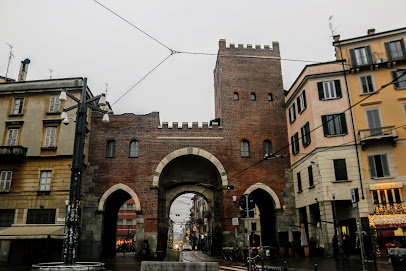
Ancient Lavoir
Explore Milan's Ancient Lavoir, a historic laundry site that reveals the city's rich cultural heritage and tranquil canal-side charm.
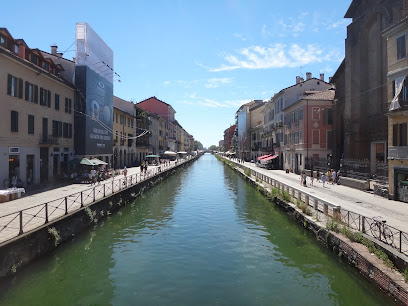
Palazzo Galloni
Explore Palazzo Galloni, a stunning cultural landmark along Naviglio Grande, reflecting Milan's rich history and architectural elegance.
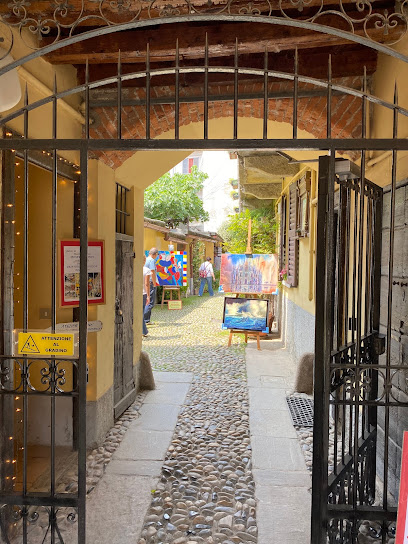
Unmissable attractions to see
Naviglio Grande
Experience the enchanting history and vibrant culture of Naviglio Grande, Milan's iconic canal lined with charming cafes and boutiques.
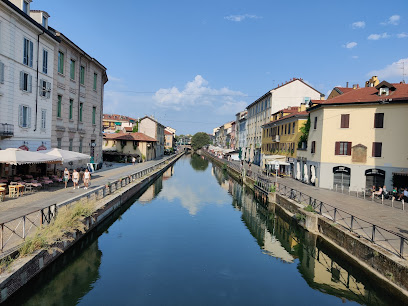
Basilica di Sant'Ambrogio
Discover the enchanting Basilica di Sant'Ambrogio in Milan, a stunning blend of history, art, and spirituality that captivates every visitor.
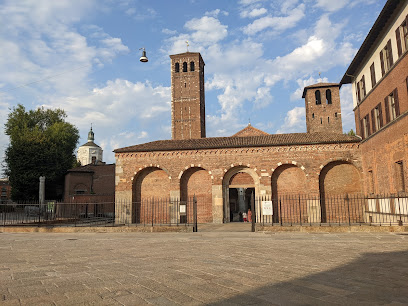
Basilica San Lorenzo Maggiore
Experience the timeless beauty of Basilica San Lorenzo Maggiore, a historical gem in Milan showcasing stunning architecture and profound spirituality.
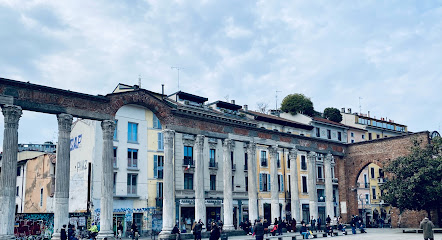
Bagatti Valsecchi Museum
Explore the opulence of Milan's history at the Bagatti Valsecchi Museum, a cultural treasure trove of art and elegance.
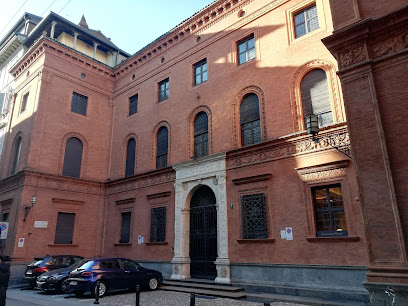
Vicolo Lavandai
Experience the enchanting Vicolo Lavandai, a historic gem along Milan's Naviglio Grande, where culture, beauty, and history converge.
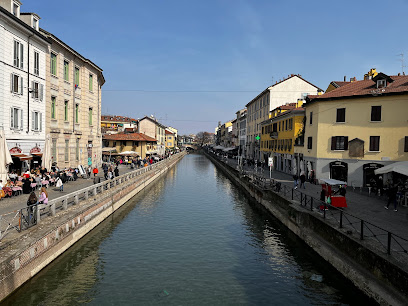
Navigli Darsena
Discover the enchanting Navigli Darsena, Milan's charming canal district, where history meets vibrant nightlife and authentic Italian cuisine.

Street Art
Explore the vibrant street art of Naviglio Grande in Milan, showcasing creativity and urban culture along its picturesque canals.

Essential places to dine
La Prosciutteria Milano Navigli
Savor the rich flavors of Tuscany at La Prosciutteria Milano Navigli, where exquisite cold cuts and fine wines meet authentic Italian charm.

El Brellin
Experience authentic Italian cuisine at El Brellin on Naviglio Grande – where tradition meets flavor in a picturesque setting.
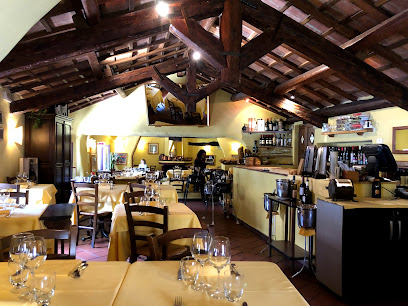
NAVIGLIO 48
Discover authentic Italian flavors at Naviglio 48 along Milan's enchanting canals—where every meal tells a story.
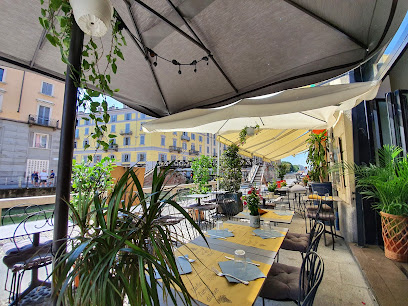
SCIUÉ Navigli
Experience authentic Italian cuisine at SCIUÉ Navigli in Milan - where traditional flavors meet modern charm along the picturesque canals.
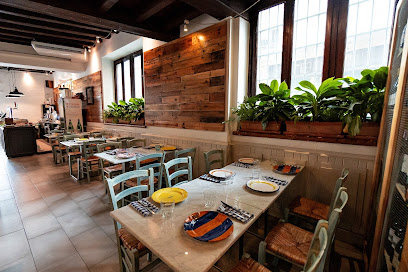
Vetusta Insigna
Experience authentic Italian flavors at Vetusta Insigna, located along Milan's scenic Naviglio Grande canal.
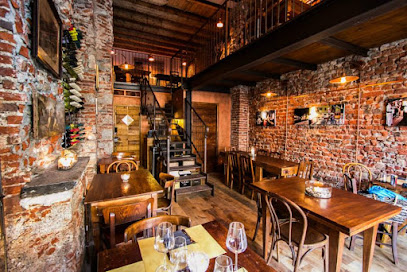
L'Altro Luca & Andrea
Discover authentic Lombardian flavors at L'Altro Luca & Andrea - a charming Italian restaurant along Milan's scenic Naviglio Grande.
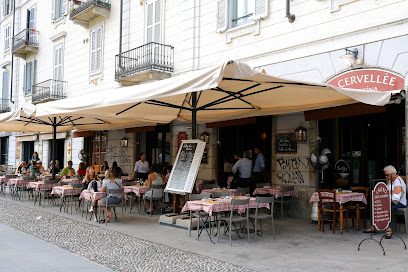
Movida Restaurant&CocktailBar
Savor authentic Italian flavors and innovative cocktails at Movida Restaurant & Cocktail Bar in Milan - a culinary gem in the heart of Italy.

Officina del Riso Navigli
Discover authentic Italian flavors at Officina del Riso Navigli, where traditional risottos meet modern culinary artistry along Milan's iconic canals.
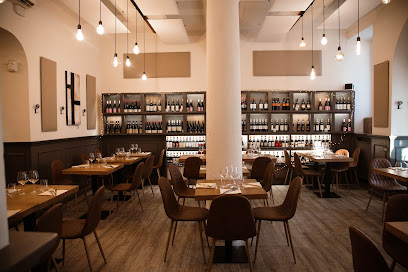
Posto di Conversazione
Discover authentic Lombardian cuisine at Posto di Conversazione, where every dish tells a story along Milan's beautiful Naviglio Grande.
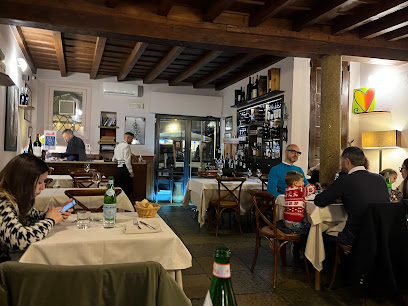
Ristorante Belé Navigli
Experience authentic Italian cuisine at Ristorante Belé Navigli in Milan's picturesque Navigli district—where every meal is a celebration of flavor.
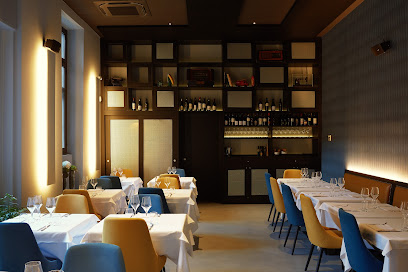
Markets, malls and hidden boutiques
Bazar del Naviglio Grande
Explore Bazar del Naviglio Grande, an antique paradise in Milan where history, culture, and unique treasures await every visitor.
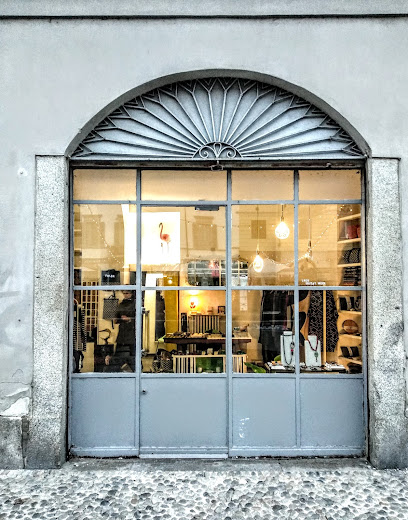
Sous Vintage Shop
Explore the charm of vintage fashion at Sous Vintage Shop in Milan, where timeless pieces and sustainable style come together.
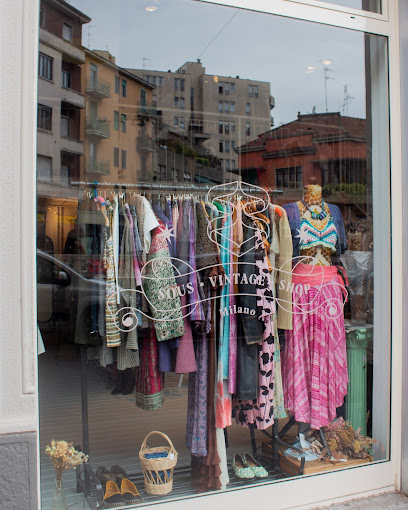
Meet2biz
Discover Milan's fashion heart at Meet2biz, where unique clothing and artisanal crafts come together in a vibrant setting.
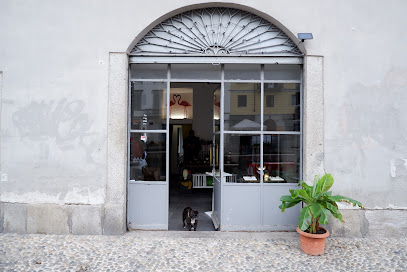
Anthropology
Explore Anthropology in Milan: a fashion haven along the Naviglio Grande that fuses contemporary style with cultural storytelling.
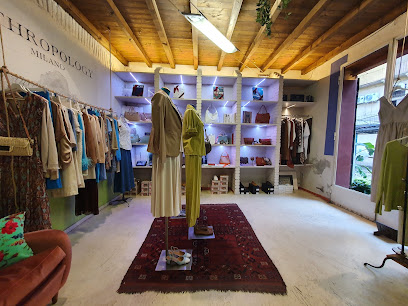
Ambroeus Milano - Navigli
Explore Ambroeus Milano - Navigli, your go-to destination for unique vintage dresses and a delightful shopping experience in Milan's enchanting Navigli district.
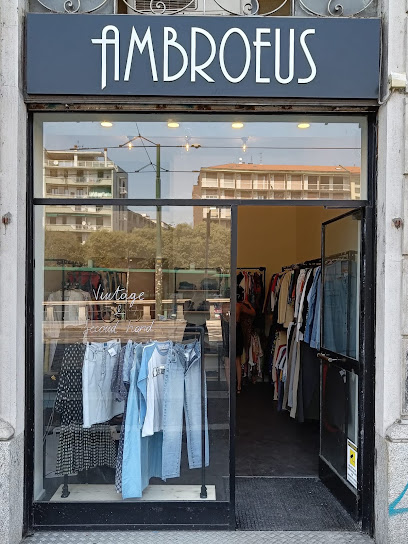
Pourquoi Moi Vintage
Explore the charm of vintage fashion at Pourquoi Moi Vintage, a delightful boutique in Milan offering unique, timeless clothing and accessories.
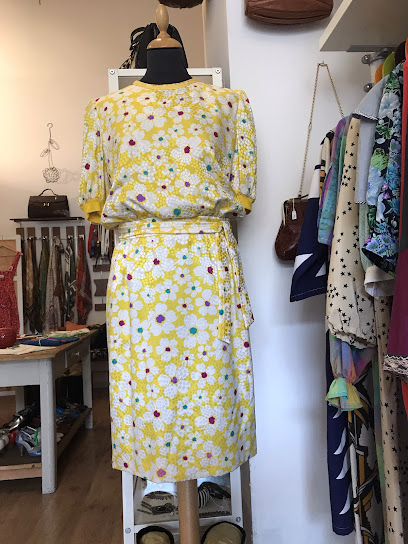
Così Cozy Milano
Explore unique collectibles and vintage treasures at Così Cozy Milano, a charming store along the scenic Naviglio Grande in Milan.
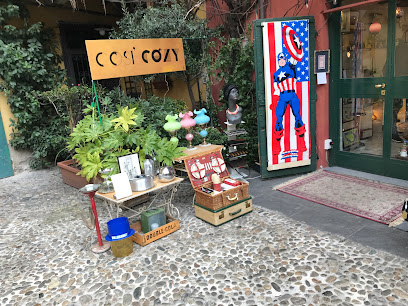
NOSHOP - Outlet di abbigliamento
Explore NOSHOP in Milan for a stylish selection of affordable dresses that reflect the essence of Italian fashion.
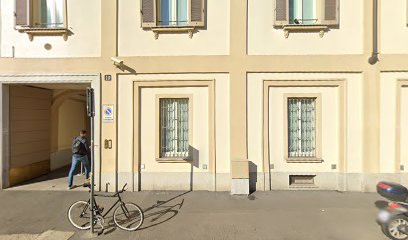
Market
Discover unique Italian gifts and crafts at the vibrant Market in Milan, a cultural shopping experience you'll cherish.
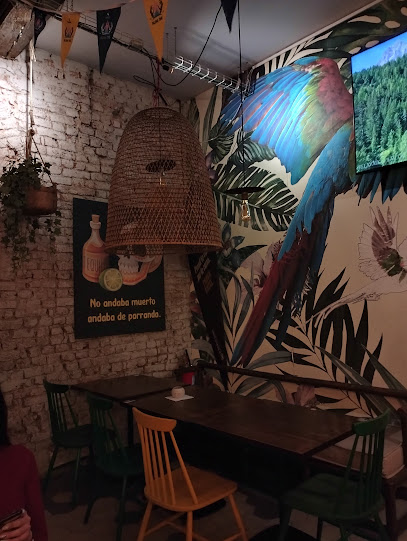
Mentine Milano
Explore Mentine Milano, a boutique destination that showcases unique fashion and accessories in the heart of Milan's vibrant culture.

Essential bars & hidden hideouts
Rita
Discover Rita, a vibrant cocktail bar in Milan offering innovative drinks and a lively atmosphere, perfect for socializing and unwinding after a day of exploration.
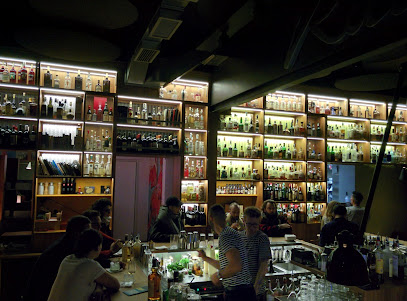
Zog
Experience the vibrant nightlife of Milan at Zog, a trendy cocktail bar along the picturesque Navigli canals with innovative drinks and lively ambiance.
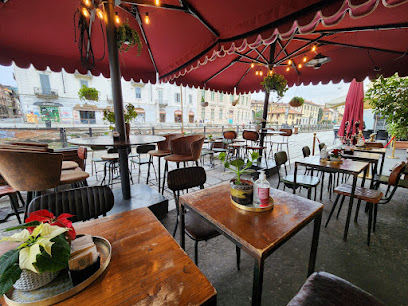
UGO Cocktail Bar - Bistrot
Discover the charm of UGO Cocktail Bar - Bistrot in Milan, where unique cocktails and vibrant ambiance create unforgettable nightlife experiences.
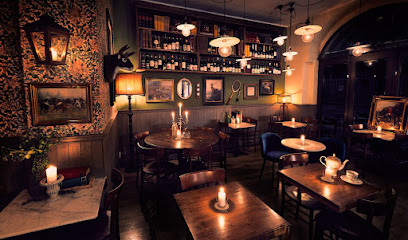
Pinch Spirits & Kitchen
Discover the vibrant cocktail culture at Pinch Spirits & Kitchen, where innovative drinks and delicious bites meet in the heart of Milan.
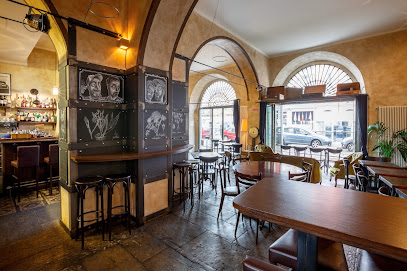
Morgante Cocktail & Food
Discover Morgante Cocktail & Food in Milan – where exquisite Italian dishes meet innovative cocktails in a vibrant atmosphere.
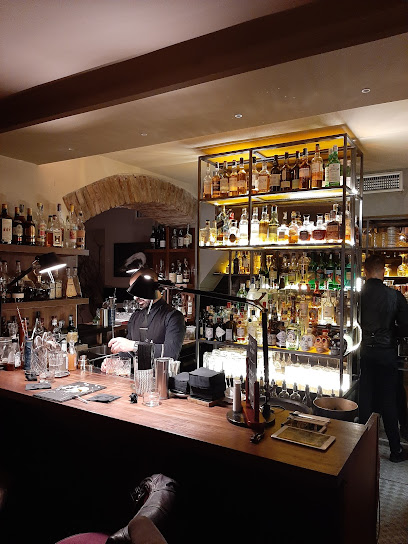
Banco
Discover Banco, a stylish cocktail bar along Naviglio Grande, where vibrant nightlife meets expertly crafted cocktails in the heart of Milan.
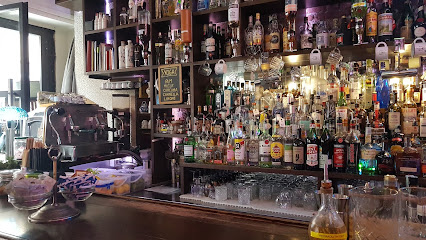
Elita BAR
Experience the vibrant nightlife of Milan at Elita BAR, where exquisite drinks and a lively atmosphere await you.
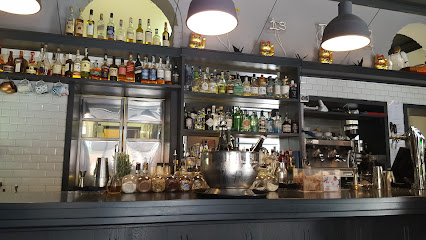
Vintage Cocktail'S Bar
Discover the charm of Vintage Cocktail's Bar in Milan, where exquisite cocktails meet a vibrant atmosphere for an unforgettable night out.
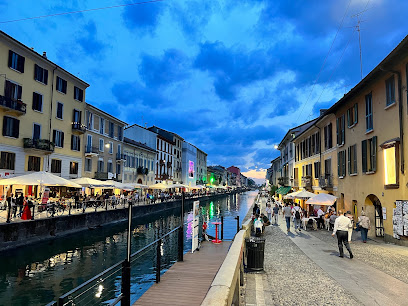
FUNKY! art cocktails & deep spirits
Experience Milan’s nightlife at FUNKY! with unique cocktails and a vibrant atmosphere that blends art and mixology.
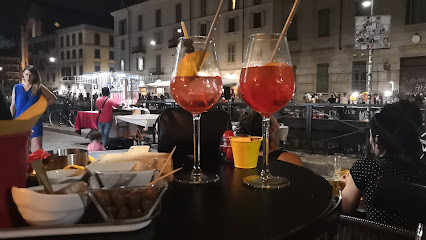
BADABOOM Drink Shot & Show (Navigli)
Immerse yourself in Milan's nightlife at BADABOOM Drink Shot & Show, where cocktails and entertainment blend seamlessly for an unforgettable experience.

Local Phrases
-
- HelloCiao
[chow] - GoodbyeArrivederci
[ah-ree-veh-dehr-chee] - YesSì
[see] - NoNo
[noh] - Please/You're welcomePer favore/Prego
[pehr fah-voh-reh/preh-goh] - Thank youGrazie
[grah-tsyeh] - Excuse me/SorryScusi/Mi dispiace
[skoo-zee/mee dees-pyah-cheh] - How are you?Come stai?
[koh-meh stai] - Fine. And you?Bene. E tu?
[beh-neh. eh too] - Do you speak English?Parli inglese?
[pahr-lee een-gleh-zeh] - I don't understandNon capisco
[non kah-pee-skoh]
- HelloCiao
-
- I'd like to see the menu, pleaseVorrei vedere il menù, per favore
[vohr-reh-ee veh-deh-reh eel meh-noo, pehr fah-voh-reh] - I don't eat meatNon mangio carne
[non mahn-joh kahr-neh] - Cheers!Salute!
[sah-loo-teh] - I would like to pay, pleaseVorrei pagare, per favore
[vohr-reh-ee pah-gah-reh, pehr fah-voh-reh]
- I'd like to see the menu, pleaseVorrei vedere il menù, per favore
-
- Help!Aiuto!
[ah-yoo-toh] - Go away!Vai via!
[vah-ee vee-ah] - Call the Police!Chiama la polizia!
[kyah-mah lah poh-lee-tsya] - Call a doctor!Chiama un medico!
[kyah-mah oon meh-dee-koh] - I'm lostMi sono perso
[mee soh-noh pehr-soh] - I'm illSto male
[stoh mah-leh]
- Help!Aiuto!
-
- I'd like to buy...Vorrei comprare...
[vohr-reh-ee kohm-prah-reh] - I'm just lookingSto solo guardando
[stoh soh-loh gwahr-dahn-doh] - How much is it?Quanto costa?
[kwahn-toh koh-stah] - That's too expensiveÈ troppo caro
[eh trohp-poh kah-roh] - Can you lower the price?Puoi abbassare il prezzo?
[pwah-ee ahb-bahs-sah-reh eel preh-tsoh]
- I'd like to buy...Vorrei comprare...
-
- What time is it?Che ore sono?
[keh oh-reh soh-noh] - It's one o'clockÈ l'una
[eh loo-nah] - Half past (10)Mezza (dieci)
[mehts-sah (dyeh-chee)] - MorningMattina
[maht-tee-nah] - AfternoonPomeriggio
[poh-meh-ree-joh] - EveningSera
[seh-rah] - YesterdayIeri
[yeh-ree] - TodayOggi
[ohd-jee] - TomorrowDomani
[doh-mah-nee] - 1Uno
[oo-noh] - 2Due
[doo-eh] - 3Tre
[treh] - 4Quattro
[kwah-troh] - 5Cinque
[cheen-kweh] - 6Sei
[seh-ee] - 7Sette
[seht-teh] - 8Otto
[oh-ttoh] - 9Nove
[noh-veh] - 10Dieci
[dyeh-chee]
- What time is it?Che ore sono?
-
- Where's a/the...?Dov'è un/il...?
[doh-veh oon/eel] - What's the address?Qual è l'indirizzo?
[kwahl eh leen-dee-ree-tsoh] - Can you show me (on the map)?Puoi mostrarmi (nella mappa)?
[pwah-ee mohs-tahr-mee (nehl-lah mahp-pah)] - When's the next (bus)?Quando passa il prossimo (autobus)?
[kwahn-doh pahs-sah eel prohs-shee-moh (ow-toh-boos)] - A ticket (to ....)Un biglietto (per ....)
[oon beel-lyet-toh (pehr)]
- Where's a/the...?Dov'è un/il...?
History of Navigli
-
The Navigli district is named after its system of canals, which dates back to the 12th century. Originally constructed to facilitate the transportation of goods, the canals played a crucial role in Milan's economic development. The Naviglio Grande, the oldest and most significant of these canals, was completed in 1257 and connected Milan to the Ticino River, allowing for the transport of marble and other materials for the construction of the Duomo.
-
During the Renaissance, the Navigli area became a vibrant hub for artists and intellectuals. The canals served not only as trade routes but also as scenic pathways for pleasure boats. Notable figures such as Leonardo da Vinci and Bramante frequented the region, contributing to its cultural richness. The construction of the Naviglio Pavese in the 18th century further expanded the canal system, enhancing trade routes and connecting the city to the agricultural lands of the Po Valley.
-
The 19th century brought significant changes to the Navigli area with the onset of industrialization. Factories and warehouses sprang up along the canals, transforming the landscape and the local economy. While this era saw economic growth, it also led to environmental degradation, prompting a decline in the use of the canals for transportation by the early 20th century. Many of the waterways fell into disrepair, and the area became less desirable.
-
After World War II, the Navigli district underwent a revival as artists, bohemians, and young professionals moved into the area, drawn by its unique charm and affordable housing. The canals, once neglected, began to see new life as bars, restaurants, and art studios opened along their banks. The annual Navigli Canal Festival, celebrating the area's history and culture, was established during this time, further embedding the district into Milan's cultural fabric.
-
Today, Navigli is recognized as one of Milan's most vibrant neighborhoods, known for its lively nightlife, art galleries, and traditional markets. The canals have been restored, attracting tourists and locals alike. Events like the Navigli Vintage Market and the design-focused Milan Design Week highlight the area's artistic spirit. Navigli serves as a testament to Milan's ability to blend its rich history with contemporary culture, making it a dynamic part of the city's identity.
Navigli Essentials
-
Navigli is easily accessible from various neighborhoods in Milan. From the central train station (Milano Centrale), you can take the M2 Metro line towards Assago Forum and get off at the Porta Genova station, which is a short walk to the Navigli district. Alternatively, trams 2 and 3 connect to Navigli, and buses 47 and 59 also serve the area. If you're coming from the Duomo, the M3 Metro line to Duomo station followed by a short walk or a tram ride on line 3 can get you there quickly.
-
Navigli is a compact area, making it ideal for exploration on foot. However, bicycles are a popular option, with several bike rental services available. The district is well-served by public transport, including trams and buses. Tram line 3 runs through Navigli and connects to other parts of the city. Taxis and rideshare services are also available for more convenience, particularly at night.
-
Navigli is generally a safe neighborhood for tourists, but as with any urban area, it's essential to stay alert. Be cautious in less crowded areas, especially at night. Petty crimes like pickpocketing can occur, particularly near popular tourist spots and crowded bars. Areas around the Darsena can be lively and sometimes rowdy at night, so remain vigilant. It’s advisable to avoid poorly lit streets after dark.
-
In case of an emergency, dial 112 for police, fire, or ambulance services in Italy. The nearest hospital to Navigli is Ospedale San Paolo. It’s also advisable to have travel insurance that covers medical emergencies. For minor ailments, pharmacies are widely available throughout the neighborhood, many of which have English-speaking staff.
-
Fashion: Do wear comfortable shoes for walking and dress appropriately for the weather. Don’t wear overly casual clothing when dining in upscale restaurants. Religion: Do respect local customs when visiting churches; cover shoulders and knees. Public Transport: Do validate your ticket before boarding. Don’t speak loudly or disturb other passengers. Greetings: Do greet locals with a friendly 'Buongiorno' during the day. Don’t forget to say 'Grazie' when receiving service. Eating & Drinking: Do try the local aperitivo culture, where drinks come with complimentary snacks. Don’t rush your meal; dining is a leisurely affair.
-
To experience Navigli like a local, visit the vibrant markets, such as the Sunday antique market along Naviglio Grande. Join the locals for aperitivo at one of the many canal-side bars where you can enjoy a drink and a small buffet of snacks. Explore the hidden gems of art galleries and artisan shops that line the canals. If you're interested in photography, the golden hour near sunset offers stunning views of the canals. Lastly, consider renting a kayak to see the canals from a unique perspective.
Nearby Cities to Navigli
-
Things To Do in Bergamo
-
Things To Do in Lugano
-
Things To Do in Ascona
-
Things To Do in Locarno
-
Things To Do in Parma
-
Things To Do in Genoa
-
Things To Do in Turin
-
Things To Do in St. Moritz
-
Things To Do in Zermatt
-
Things To Do in Verona
-
Things To Do in Cinque Terre
-
Things To Do in Arosa
-
Things To Do in Grindelwald
-
Things To Do in Murren
-
Things To Do in Davos












